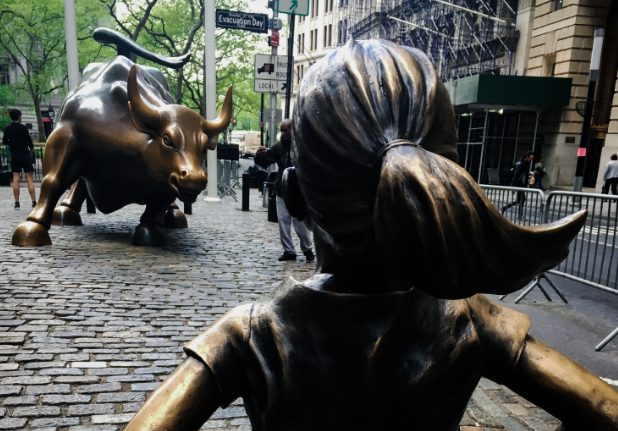Last week it was declared that the S&P 500 slid far enough to officially put it in a bear market alongside the Nasdaq which has been going through a bear market since April. Media outlets and consumers alike have been quick to wonder if a recession is far off. With all this talk about the stock market, it might be a good time to brush up on what a bear market is, what it means for investing, and how you can help explain it to everyday consumers without generating panic.
History of bear markets in the U.S.
A bear market is essentially any market where prices decline for a prolonged period, usually at least 20%, from a recent high. The S&P 500 has fallen 22% this year since its high in January and the Nasdaq has lost a third of its value in the same time. The concept of a bear market isn’t limited to indexes, it can also be associated with individual commodities or securities, but indexes can give economists a better barometer of how the overall economy is doing.
The S&P 500 has seen 26 bear markets in the last one hundred years. Bear markets can last for years, like during the Great Depression when stocks fell 84% between September 1929 and June 1932 taking until 1945 to fully recover, or several weeks. The shortest bear market on record was 33 days in March 2020, largely due to the uncertainty of the pandemic, and was able to fully recoup its losses in six months.
Bear markets are an inevitable part of investing
It is important to note that 20% is an arbitrary number, intended as a guide, that can sometimes be better defined by a market where investors are more risk-averse. A drop in investor confidence can signal when a bear market is about to hit due to large selling off of shares to avoid future losses. A bear market is essentially an indicator that investors are pessimistic about future profits.
When the average consumer hears that the stock market is falling, it can cause panic and anxiety that the economy is also crashing and a recession is bound to happen. There are two things to keep in mind. First, although bear markets can be accompanied shortly by a recession it does not guarantee that one will happen. Of the 26 bear markets, 15 of them saw a recession. Second, recessions are not rare and although a bear market is a sign of a slowing economy it does not mean that the slowing will be sustained over the long term.
Depending on the type of investments your readers are involved in, it is often best to wait out a bear market, which can be better in the long term than selling off stocks in the short term. Since markets work in cycles, those that opt-out during this time will likely miss out on the early stages of recovery and therefore the most gains.
Although the stock market is always risky and never a guarantee, reviewing history can help ease anxiety about what’s to come. Between 1926-2019 a bear market lasted an average of 1.3 years with an average loss of 38%, while the subsequent bull markets have lasted an average of 6.6 years with an average return of 339%. That’s a pretty good indicator that each cycle is worth waiting out if your goal markers are still years ahead.
Other terms to understand and explain:
Cyclical bear market: This is a short-term bear market that generally lasts only a few months due to market volatility.
Secular bear market: When a market has below-average returns for a sustained period, anywhere from 10-20 years. Stocks may see increases for a time period, but those gains are eventually lost.
Bull market: Basically the opposite of a bear market, when prices rise continuously for a prolonged period showing investor confidence.
Correction: Sometimes confused with a bear market, this is when prices decline for a short period of time, generally around 10% from its peak. These occur rather often. The S&P 500 experienced 18 of them between 1980 and 2020.
Recession: As defined by the National Bureau of Economic Research, ‘a significant decline in economic activity spread across the economy, lasting more than a few months, normally visible in real GDP, real income, employment, industrial production, and wholesale-retail sales.’






